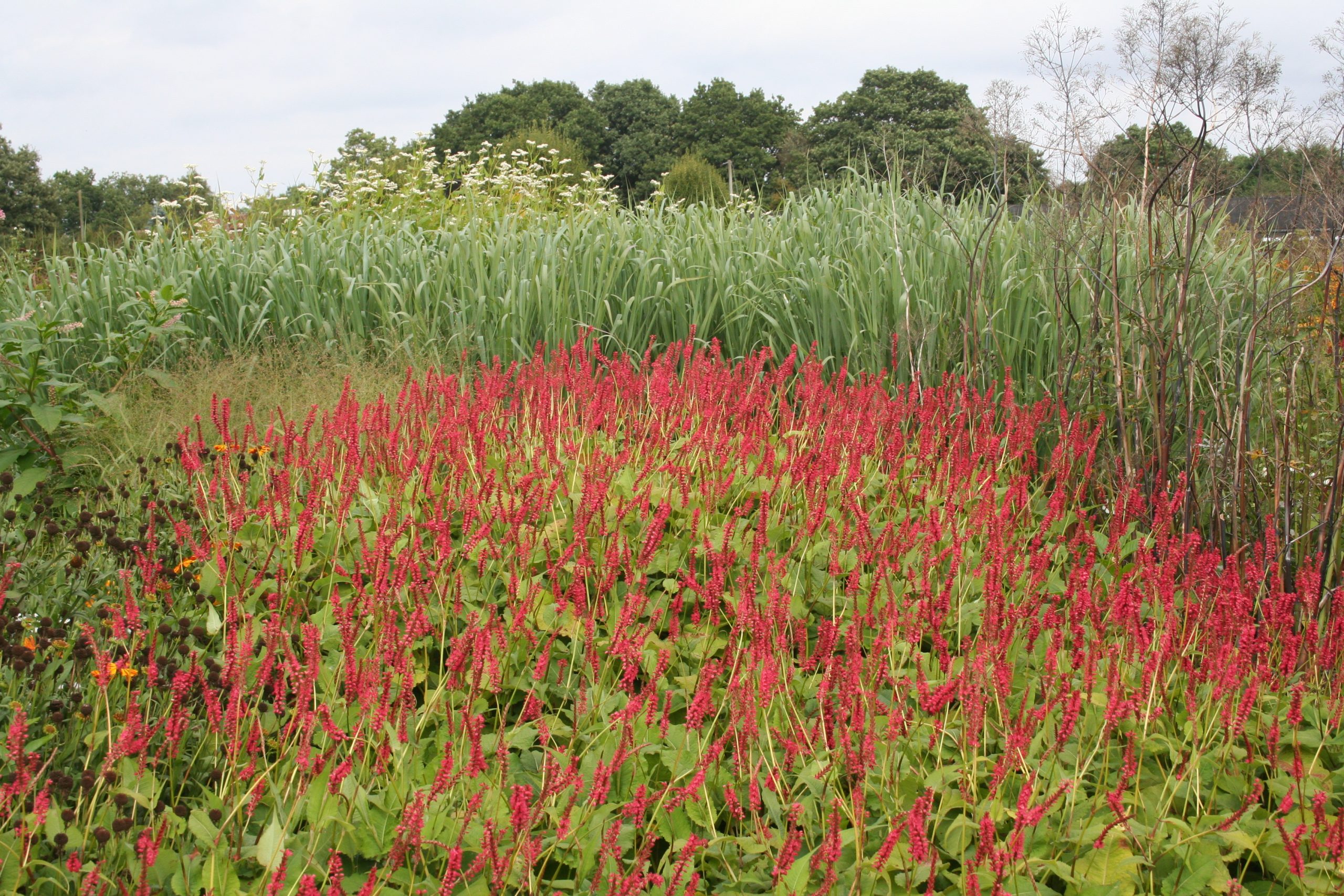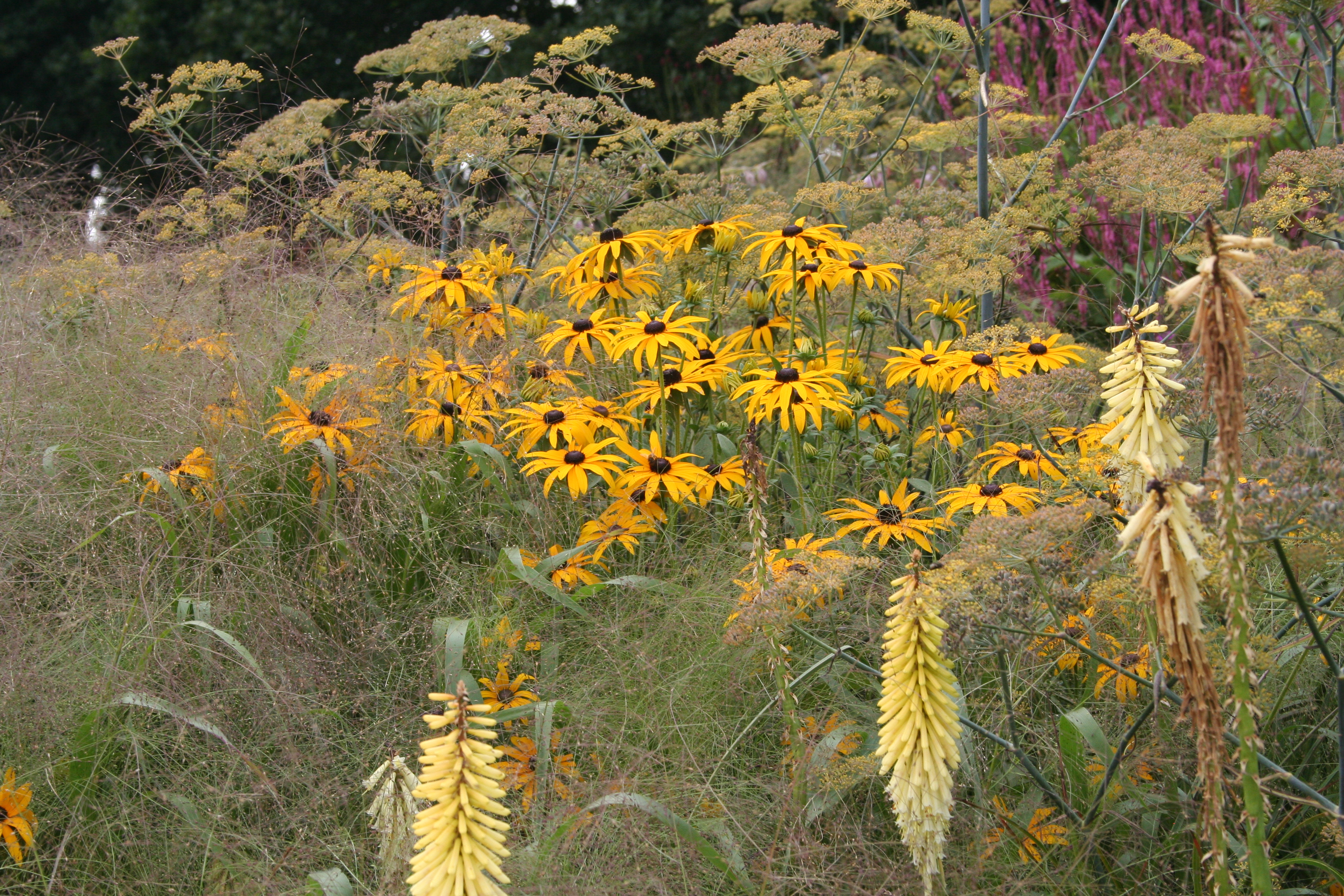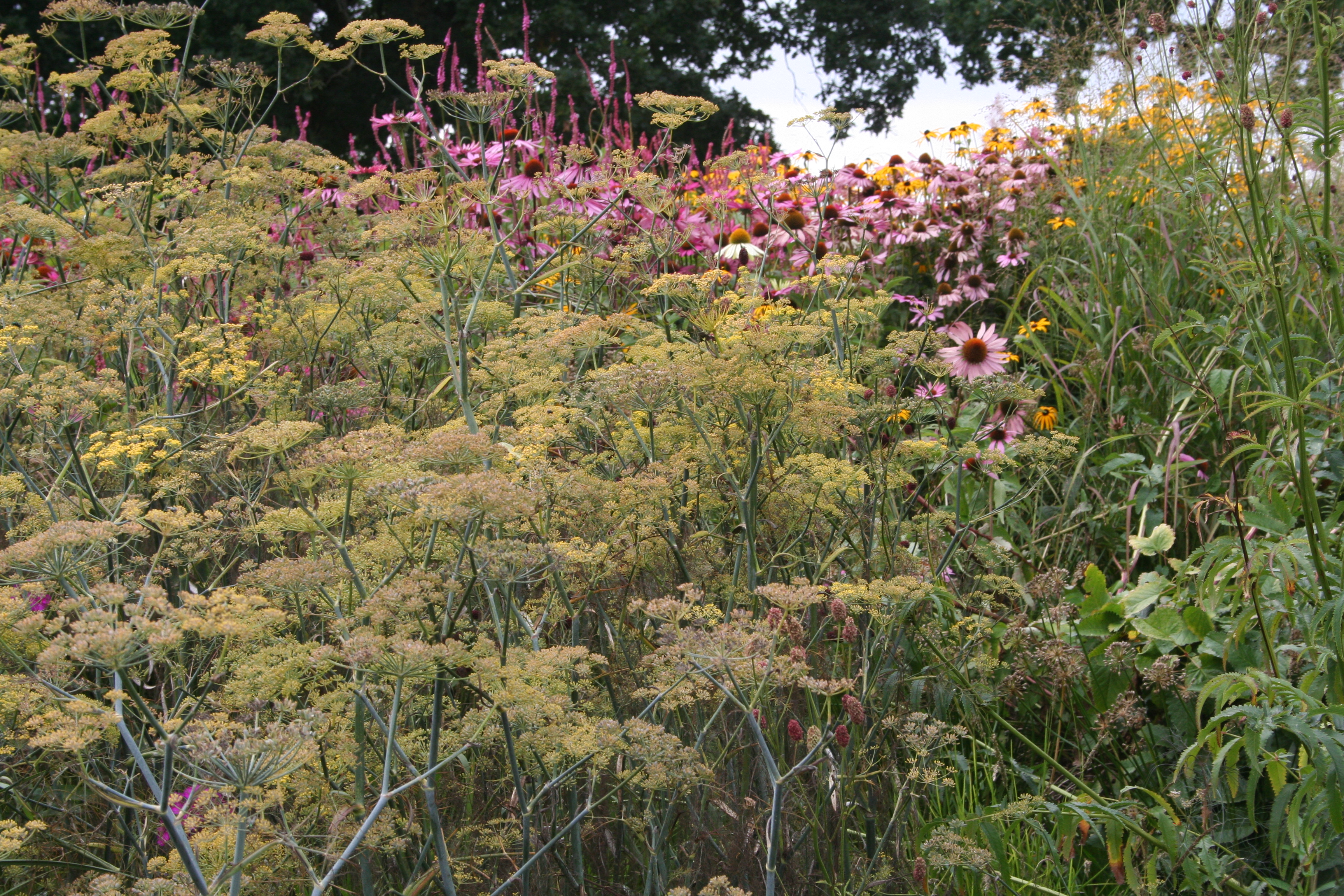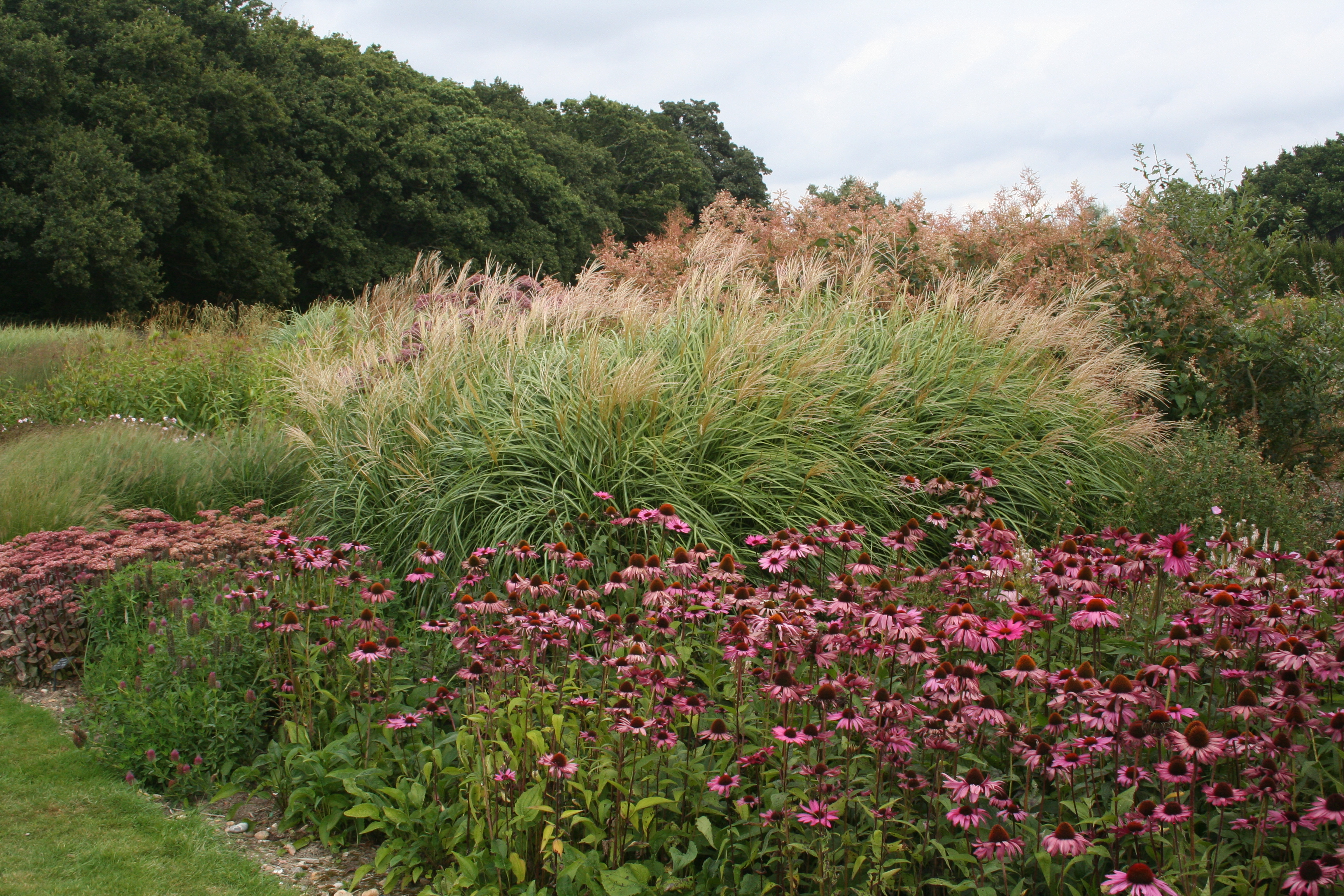Prairie gardens, originally modelled on the great grasslands of North America, have been championed in Europe by Dutch, award winning landscape designer Piet Oudolf. Piet is an integral part of the “new perennial movement”. These perennial meadows peak in late summer when the beauty of many other garden styles has faded.
Grasses are a fundamental ingredient of the prairie garden and should occupy a minimum of a third of the garden. The remaining portion of the garden should be filled with flowering perennials, planted in a naturalistic style. The scale of the plants used should be tailored to the size of the plot. It is worth investing in a handful of larger specimens to create impact.
The form of the foliage, the textures and the heights of the planting can be equally as important as the flowers. Odd numbers of plants in bold drifts are essential. Little patches, often used in the cottage garden for example, are irrelevant here. A small selection of varieties in large quantities is key.
Appealing planting combinations that bloom in succession provide continually vibrant, year long displays. Even after the flowers have finished, the structure of the grasses and seed heads remain long into winter, when they are tipped with frost, providing a habitat and a feast for wildlife. Plants should therefore only be cut back in late winter or early spring.
Groundcover plants will aid weed suppression, but this can be supplemented by using a mulch in the development stages of the garden. Good drainage in the soil will help to avoid plant losses from winter wet.
The gardener can experiment with plant varieties and combinations, but commonly used plants include flowering perennials such as Sedums, Echinaceas, Achilleas, Rudbeckias, Heleniums, Astrantias, Monardas, Knautias, Gauras, and Asters to name but a few. These should be supplemented with earlier blooms to provide spring and early summer interest. These include Alliums, Camassias, Centranthus and Baptisias. Many types of grasses suit this style including Panicums, Miscanthus, Deschampsias, and Molineas.
The pictures featured in this article are of the sensational Sussex Prairie Gardens near Henfield in West Sussex. A visit here provides huge inspiration if you aspire to garden in this increasingly popular fashion. Paths through the borders allow you to get right in amongst the planting.
Mark Snelling.
All pictures copyright Gardenforpleasure.co.uk

















